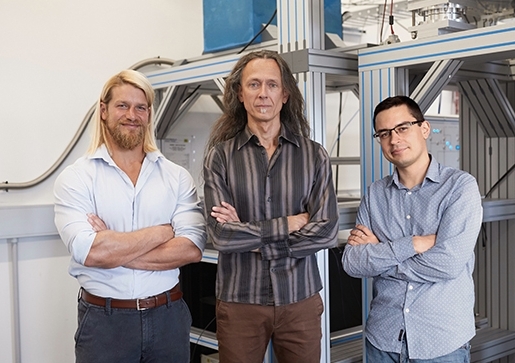Professor Andrea Morello and his team have demonstrated the operation of a new qubit called flip-flop. This combines the quantum properties of single atoms with simple controllability using electric signals similar to those used in standard computer chips.
They were also the first to demonstrate that using the spin of an electron and the nuclear spin of a single phosphorus atom in silicon could function as qubits. But according to Prof. Morello, while both qubits operate well on their own, they require oscillating magnetic fields to function.
“Magnetic fields are difficult to localize at the nanometre scale, which is the typical size of the individual quantum computer components. This is why the very first proposal for a silicon quantum bit envisaged having all the qubits immersed in a uniform oscillating magnetic field, applied across the whole chip, and then using local electric fields to select which qubit gets operated.”
prof mello
The idea for flip-flop began a few years ago when Prof. Morello realized that by defining the qubit as the combined up-down over down-up orientation of the electron and the nucleus of the atom, they could control such qubits using the electric fields alone.
“For example, if the ‘0’ state is ‘electron-down / nucleus -up’ and the ‘1’ state is ‘electron-up / nucleus-down’, changing from ‘0’ to ‘1’ means that the electron’ flips’ up and the nucleus’ flops’ down. Hence the name!”
Dr. Rostyslav Savytskyy
The theory proposed that by displacing the electron with respect to the nucleus, arbitrary quantum states of the flip-flop qubit could be programmed, and the result of the team’s experiment confirms that. The results were published in Science Advances on February 10, 2023.
The electrical control of the “flip-flop” qubit by displacing the electron from the nucleus has a significant side effect. According to Dr. Tim Botzem, another lead experimental author, such electron displacement is accomplished by sending voltage to a small metallic electrode rather than irradiating the chip with an oscillating magnetic field. This technique is more similar to the type of electrical signal that is routinely routed through traditional silicon computer chips found in computers and smartphones.
When a negative charge (the electron) is shifted away from a positive charge (the nucleus), an electric dipole is created. When two (or more) electric dipoles are placed close together, they generate a strong electrical coupling that may mediate multi-qubit quantum logic operations of the type necessary to execute effective quantum computing.
“The standard way to couple spin qubits in silicon is by placing the electrons so close to each other that they effectively ‘touch,'”
Prof. Morello
For this to work, the qubits must be placed on a grid with a pitch of a few tens of nanometers. The engineering challenges involved are enormous. Electric dipoles, on the other hand, do not need to ‘touch’ each other; they interact with each other at a distance. Prof. Morello’s theory indicates that the best distance for fast and high-fidelity quantum processes is 200 nanometres.
“This could be a game-changing development because 200 nanometres is far enough to allow inserting various control and readout devices in between the qubits, making the processor easier to wire up and operate.”
Prof. Morello

